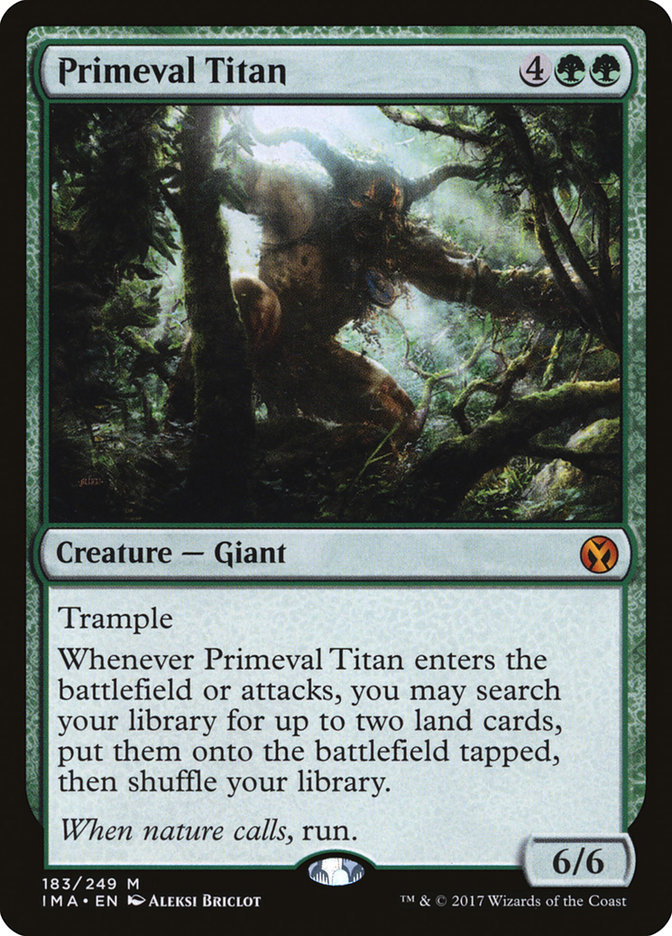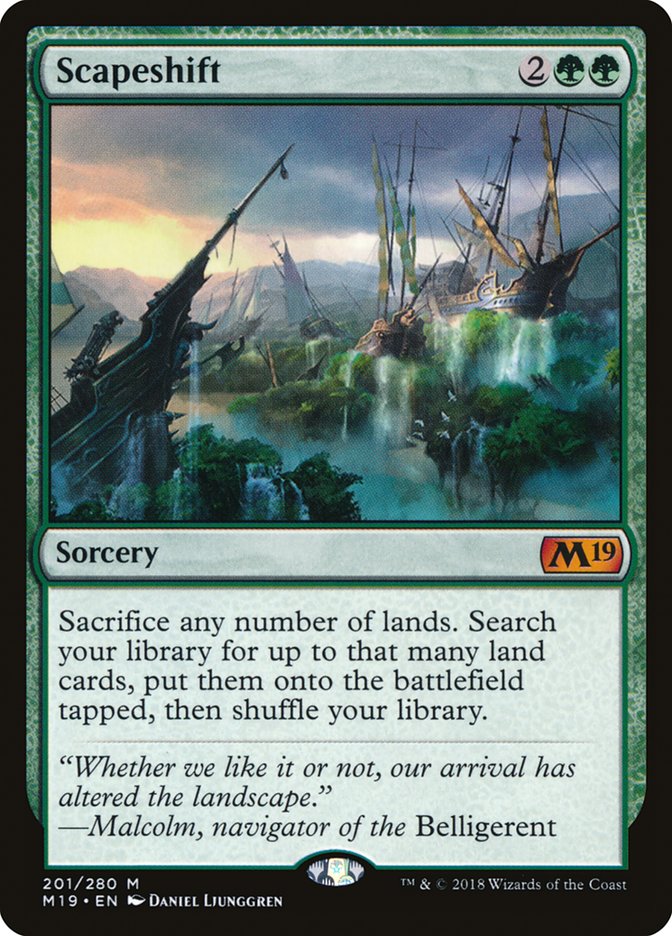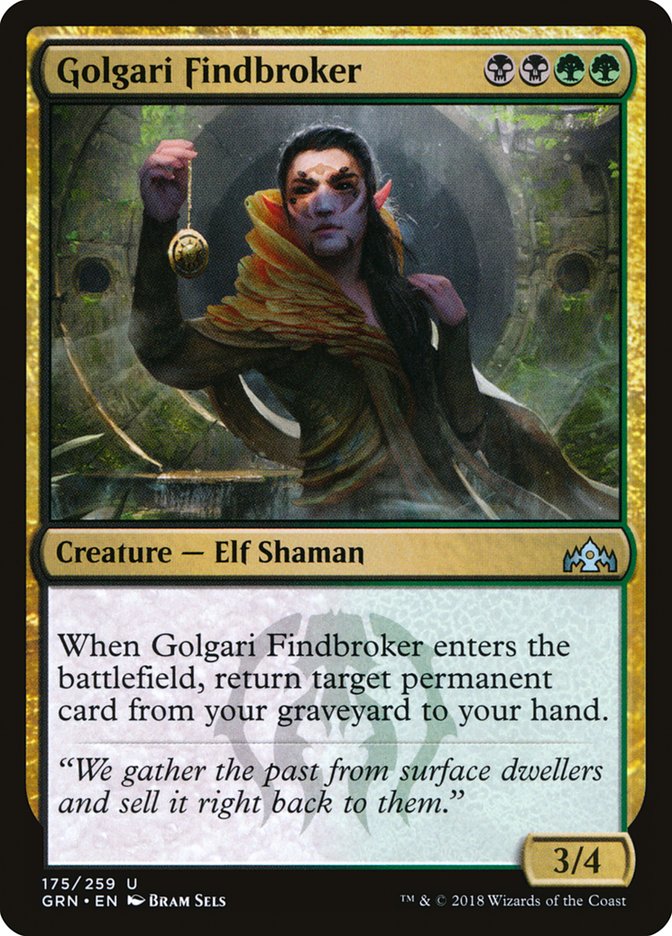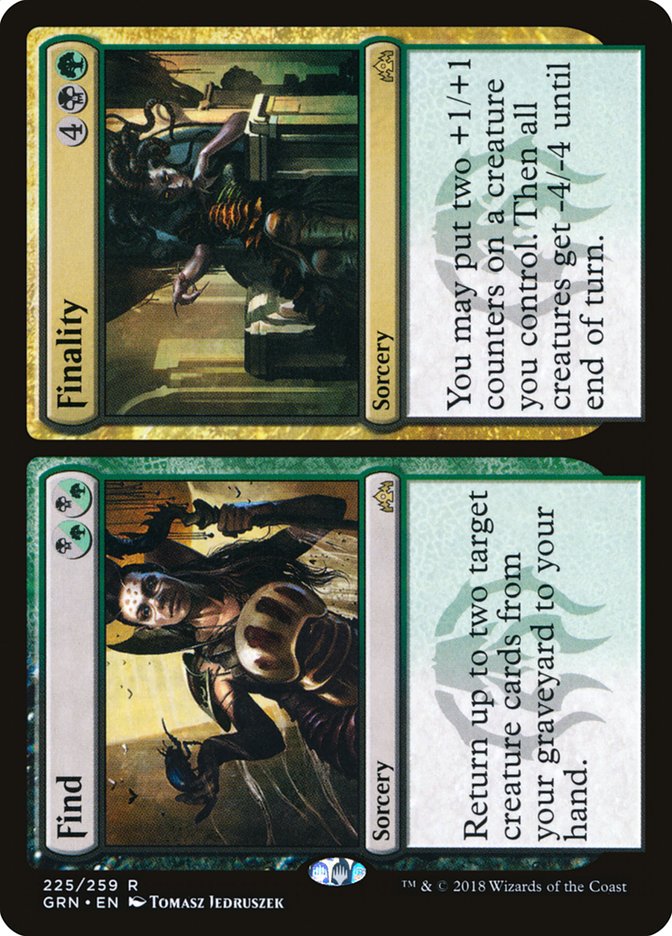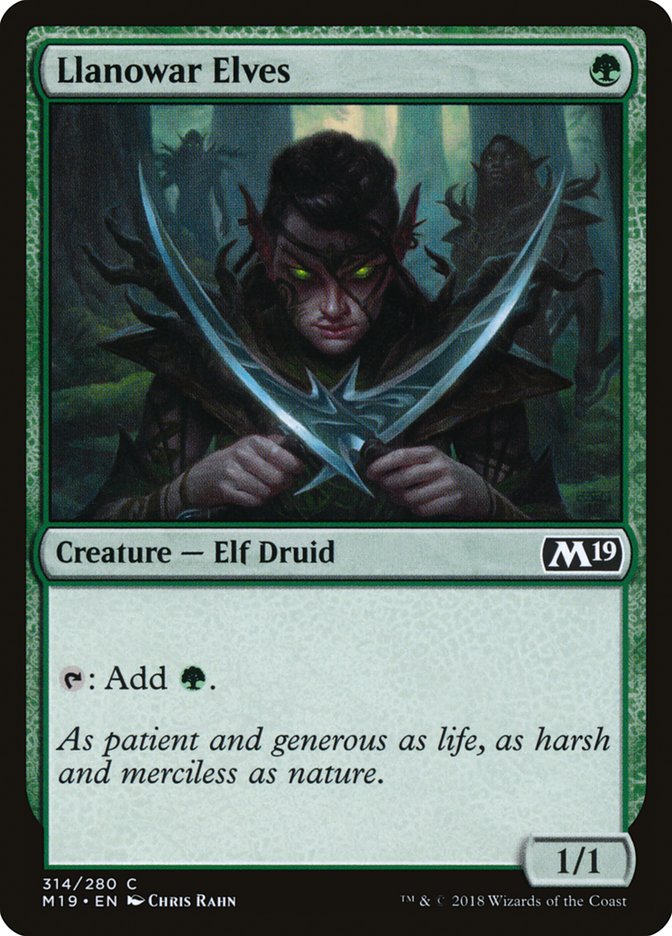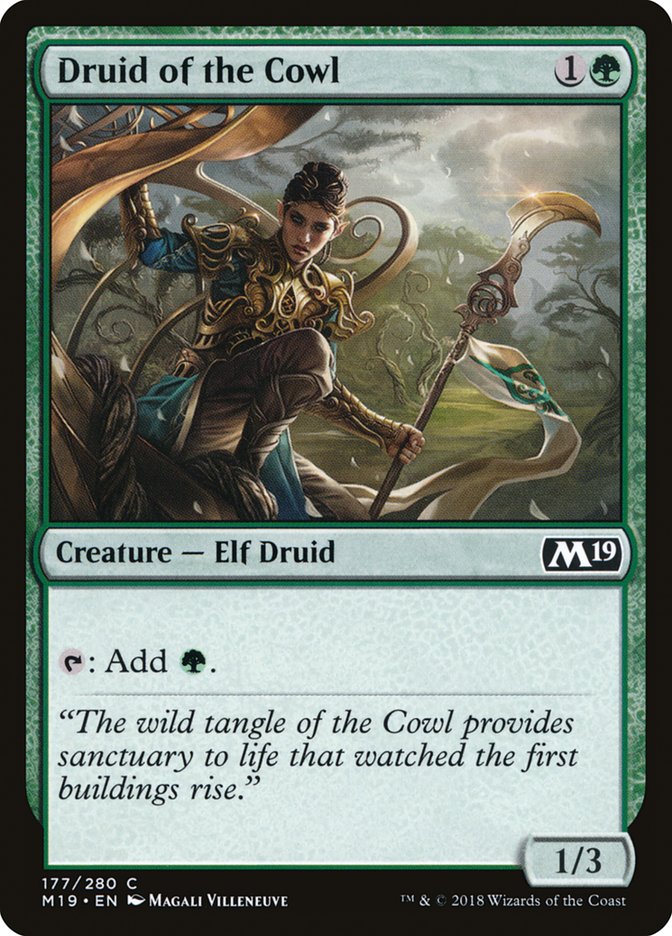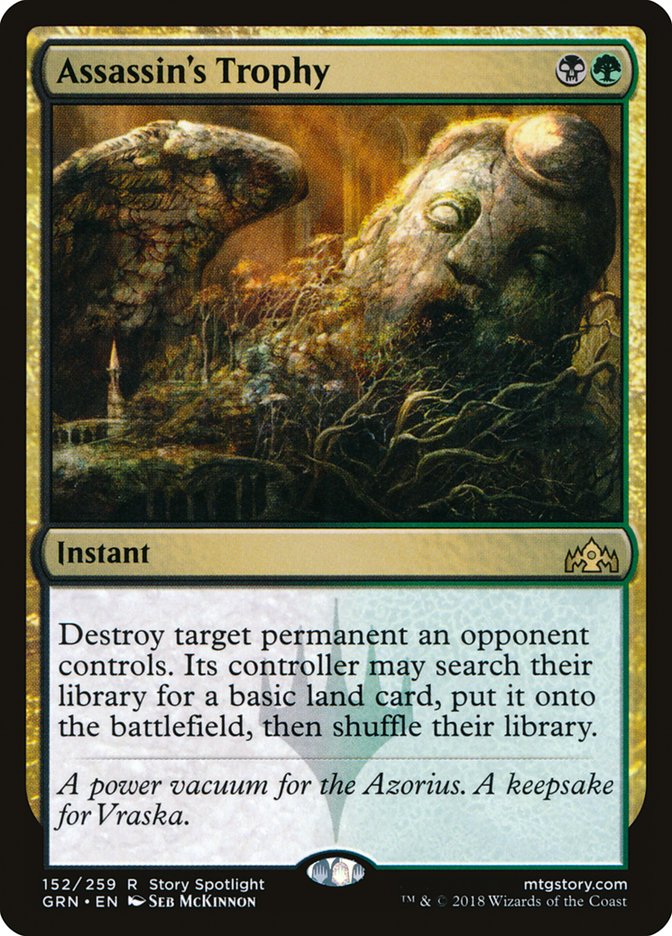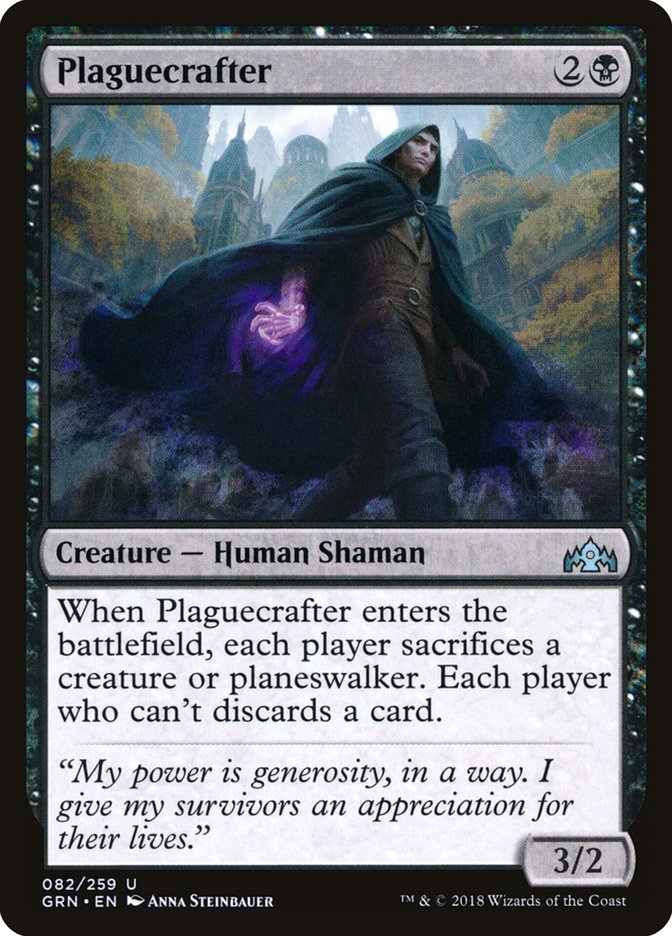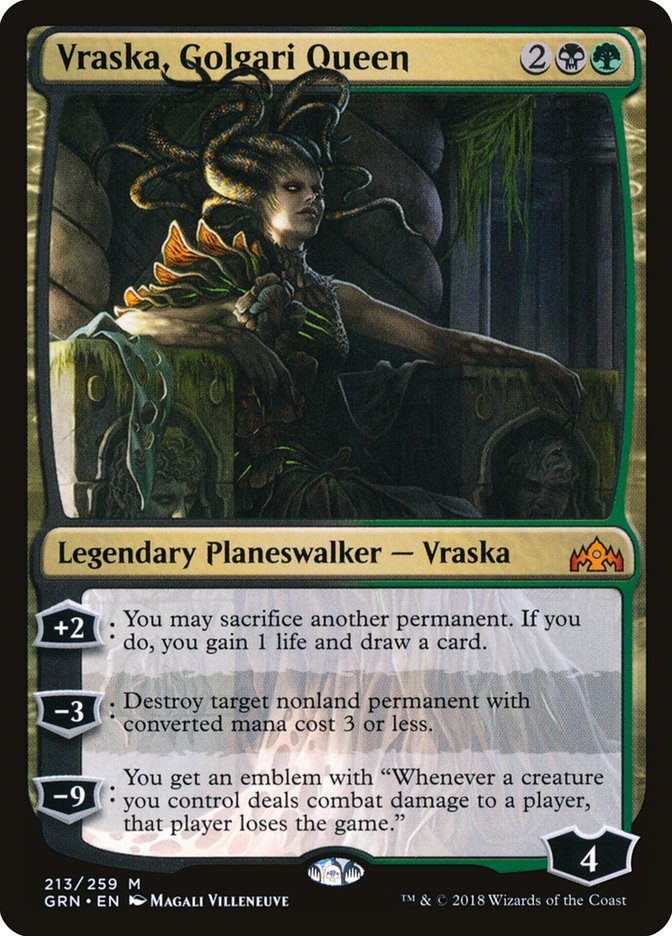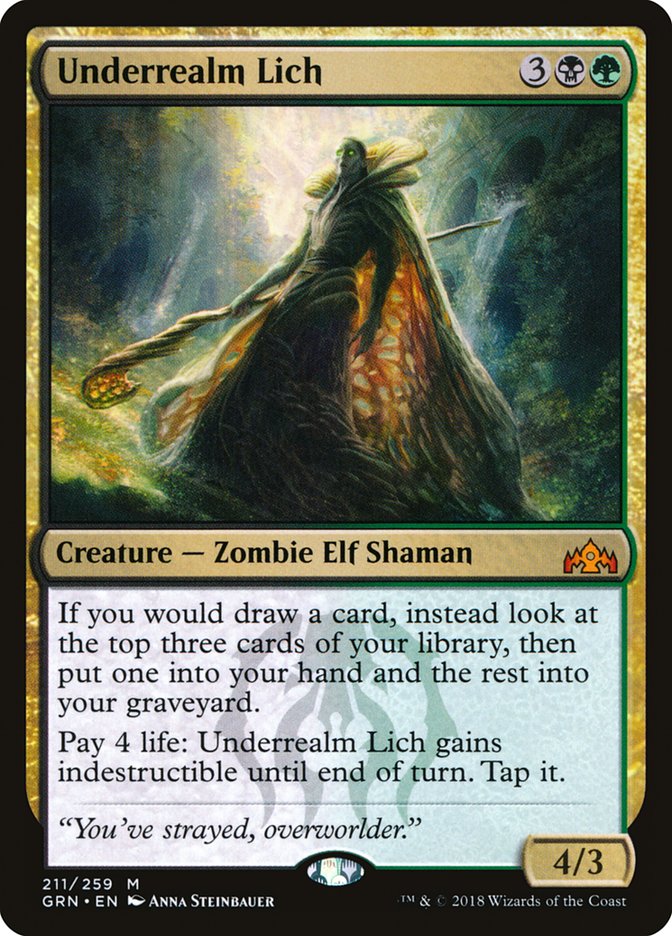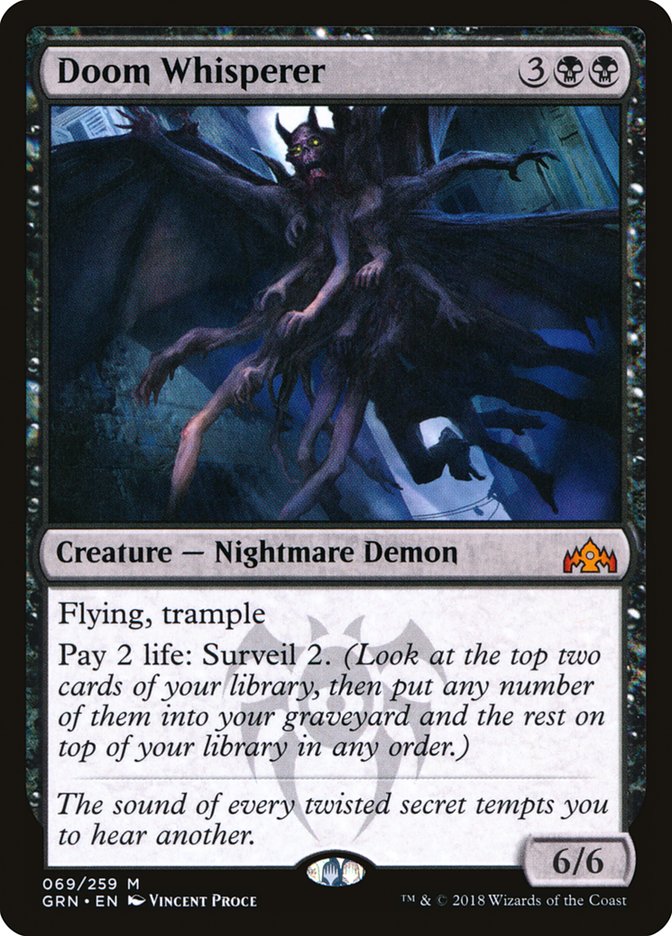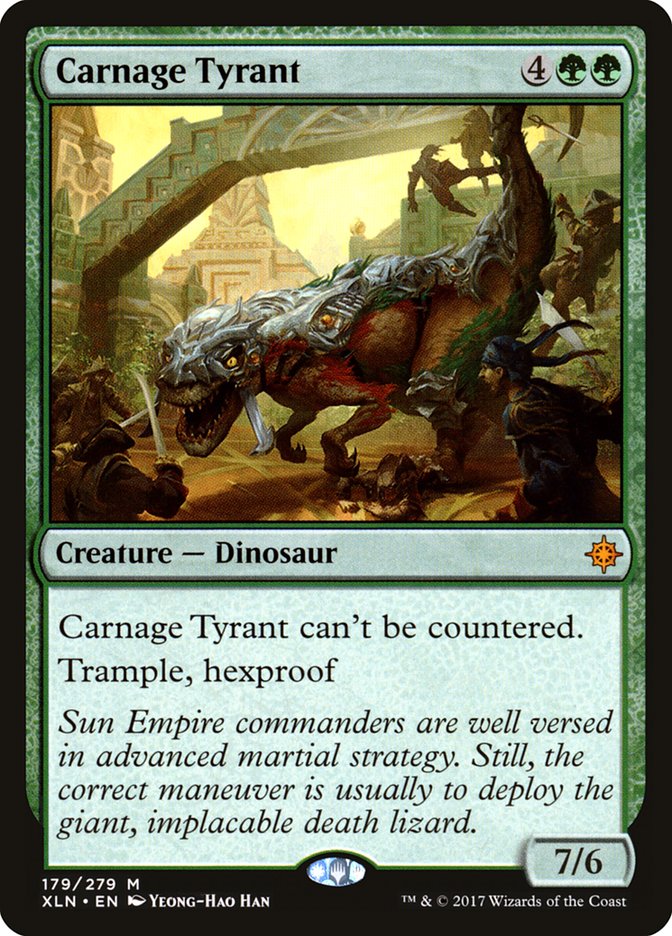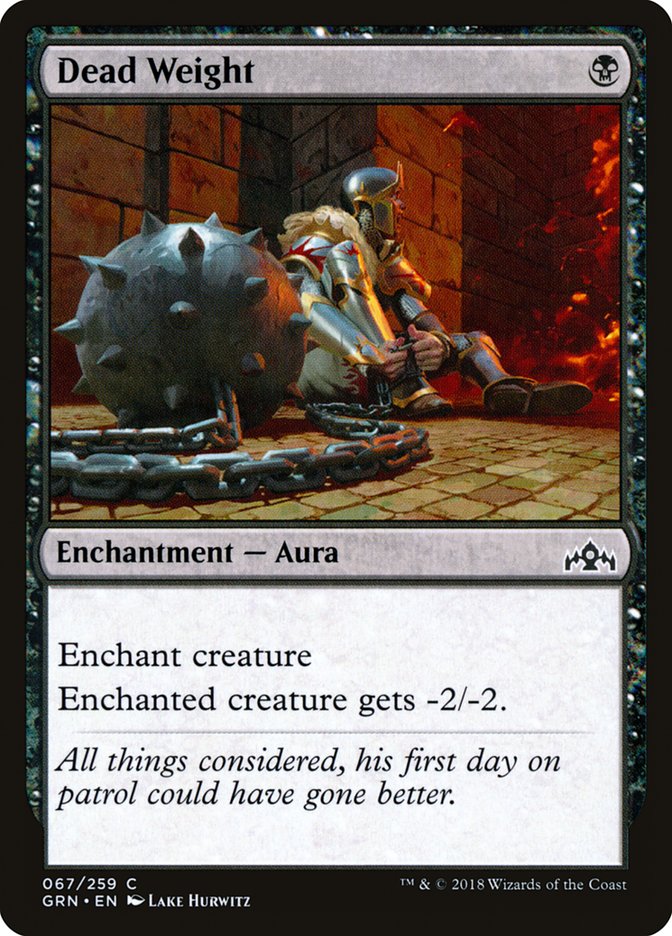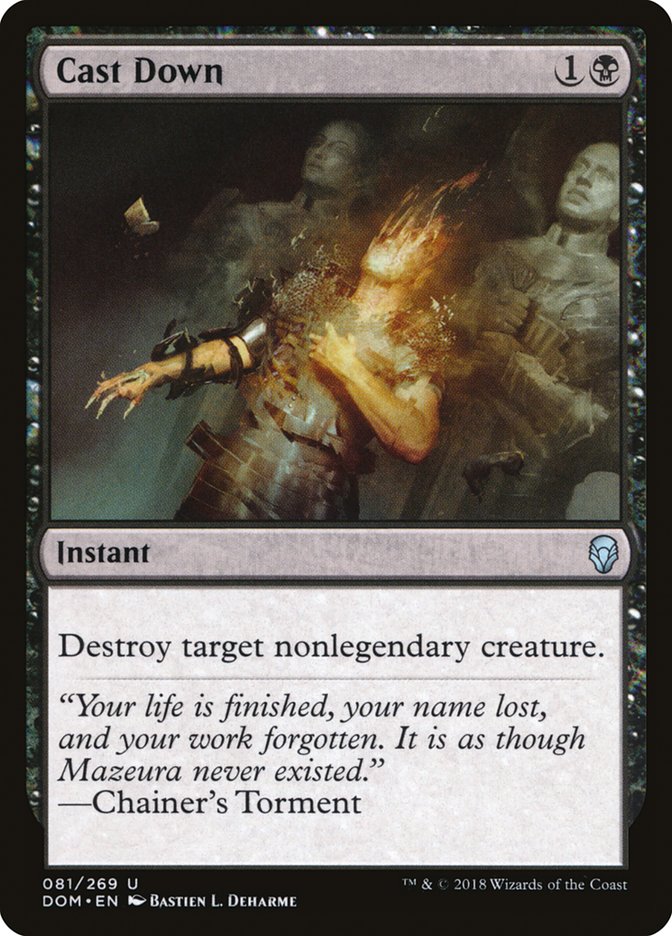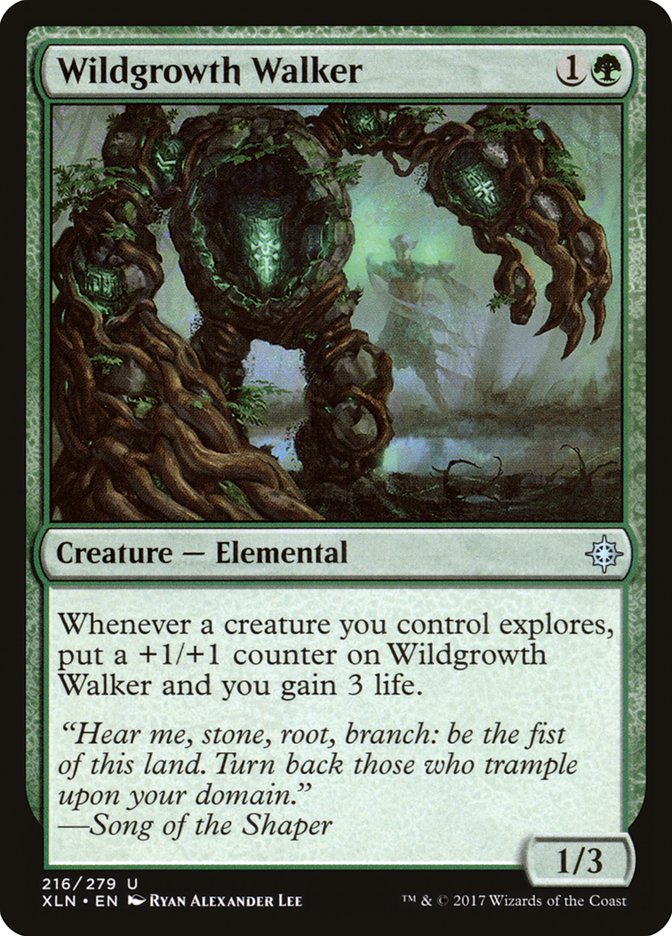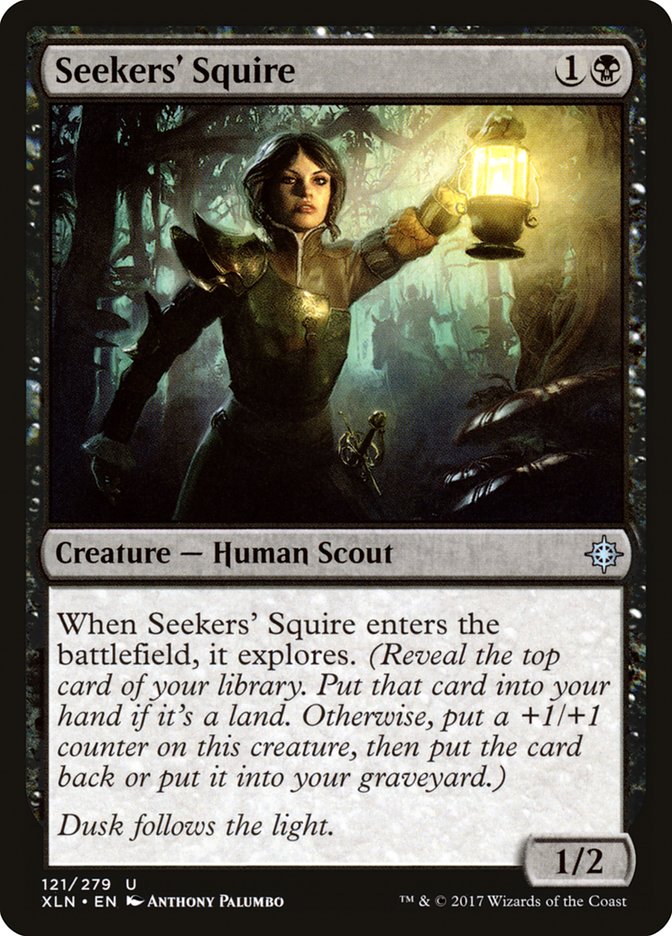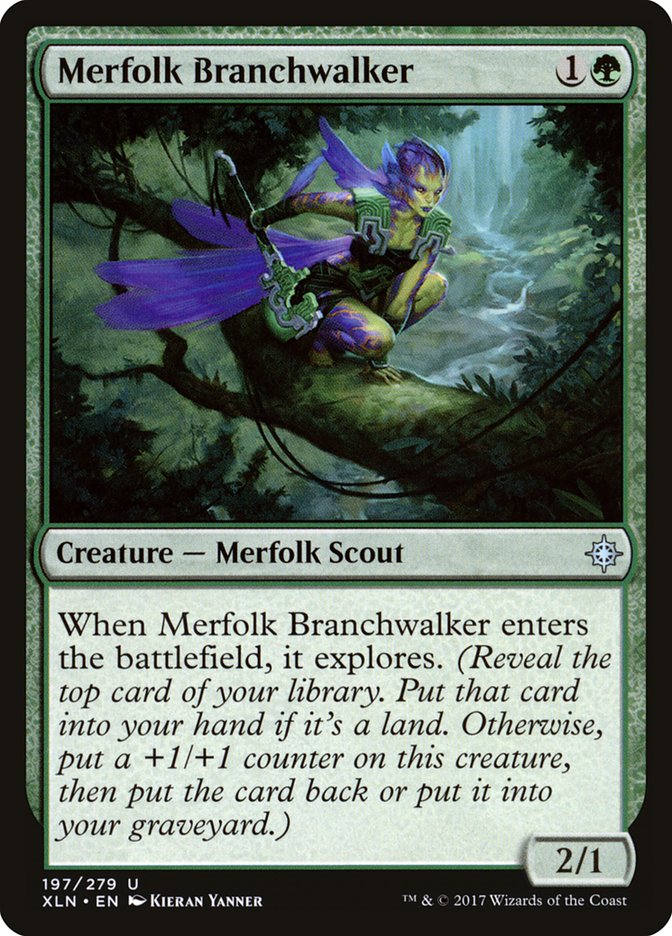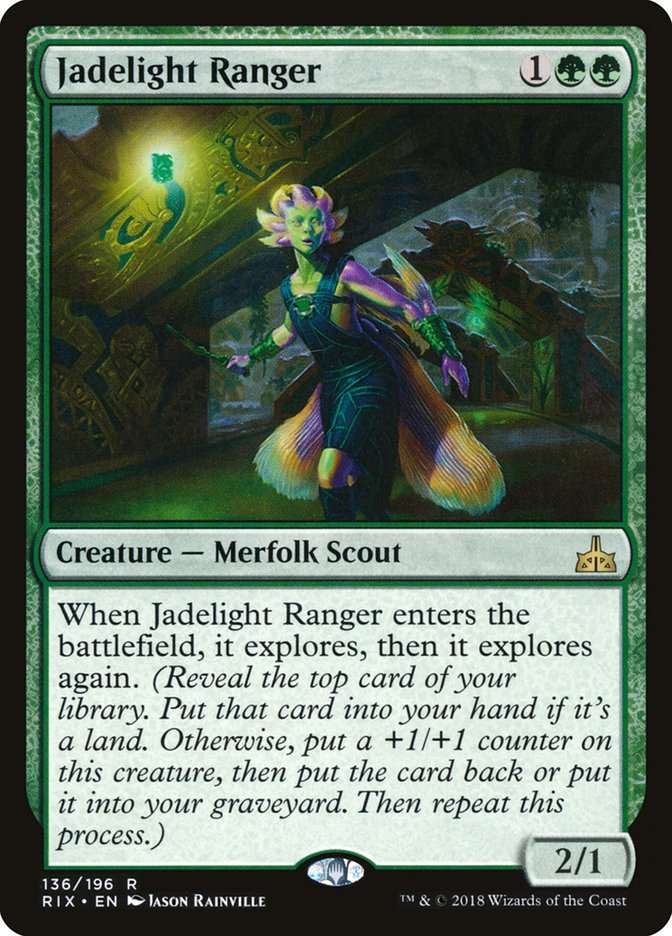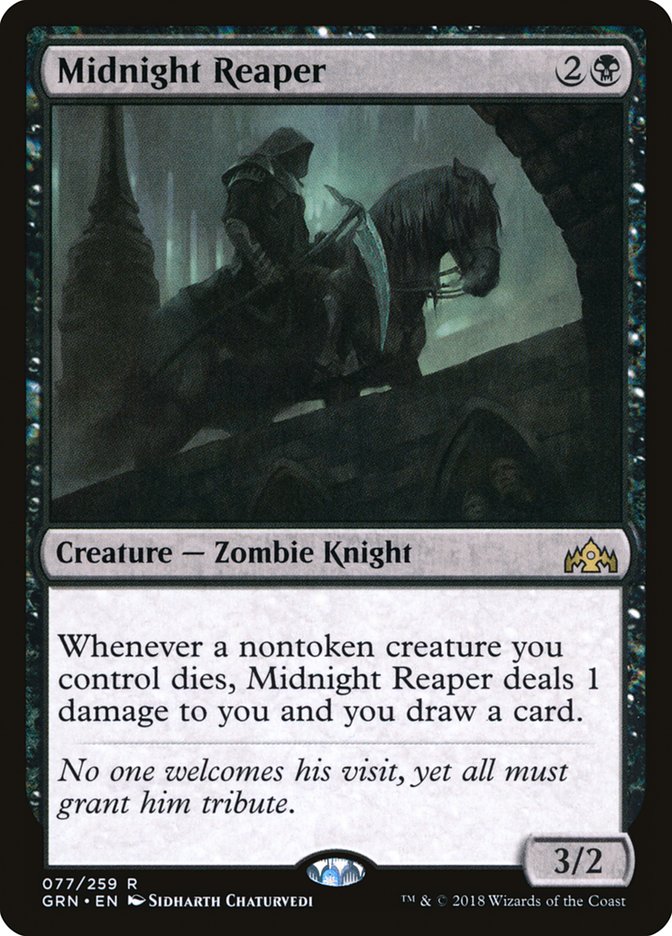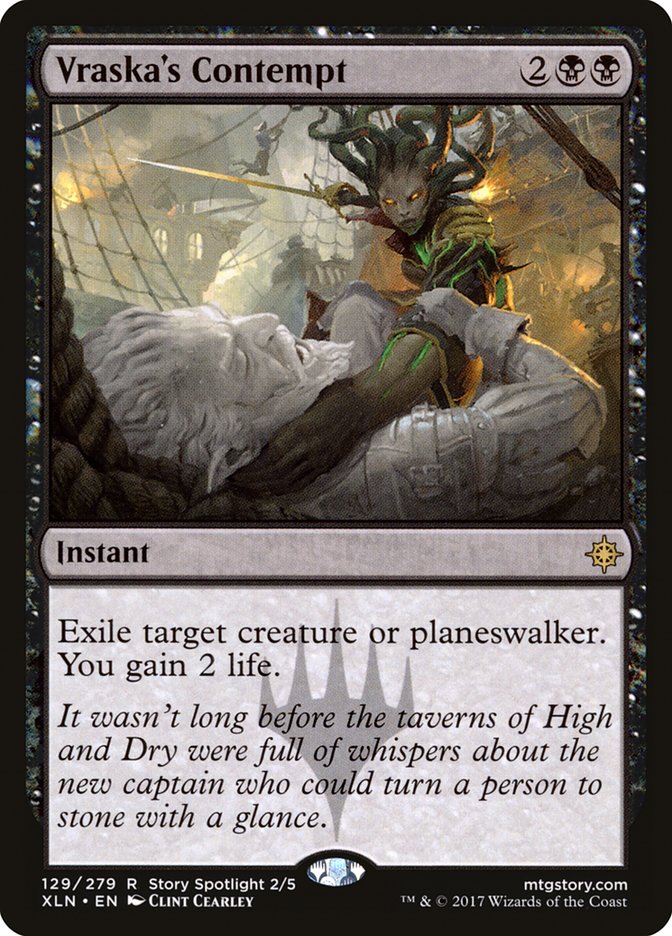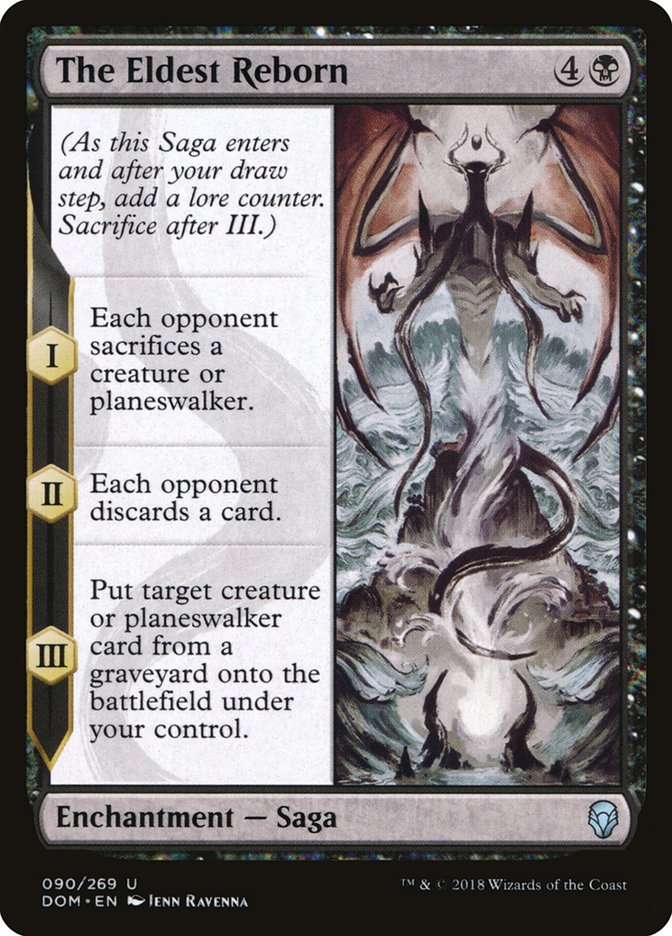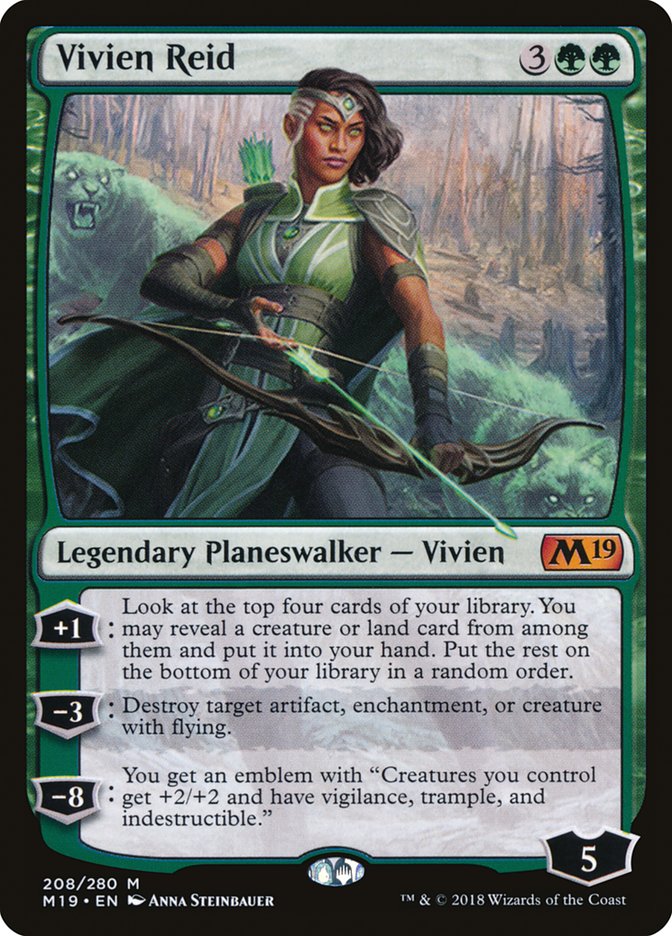Well, here we are, three weeks into Guilds of Ravnica Standard and still stuck on the topic of Golgari. I know! I also would like to move on from this topic, but it doesn’t seem like we’re anywhere near figuring out the optimal builds of the archetype. Maybe someone is, but collectively we’re all over the place. Arguments are breaking out, one person’s treasure is another person’s Ryan Overturf, and it seems like we’re getting nowhere fast. Today I’m taking one more swing at the subject since there are some very interesting topics to be discussed. Just bear with me for one more article about Golgari. We’ll get through this together, I promise.
There are many polarizing opinions when it comes to Golgari. I mean, really, what cards aren’t being debated in the strategy? It seems like every article I read, podcast I listen to, or social media post I see has wildly different opinions. Some say Llanowar Elves is a must-include. while others consider it negligible. Assassin’s Trophy is either amazing or terrible. The same goes for explore creatures. Upwards of three copies of Vraska, Golgari Queen can be found in some lists while others play zero. Even Memorial of Folly numbers range from zero to four with no real consensus to why. Going over each card individually felt like the best way to tackle the topic of Golgari last week, but I’m starting to think there’s a better approach.
Mana Advantage Theory
Mana Advantage Theory is the understanding of the effects of introducing mana acceleration into strategies. It’s something we’ve done for a very long time in Magic, a subject we’re familiar with even if we’ve never stopped to think about it.
To justify playing mana acceleration, one must build a strategy around it. Playing with mana acceleration often comes at the cost of introducing low-power-level cards into a deck; thus, there must be a reward for doing so. Often strategies that want acceleration are also not interested in interacting with an opponent on a one-for-one level. For example, we don’t see Noble Hierarch in Abzan Midrange decks in Modern. That deck is designed to whittle away at an opponent’s resources, and accelerating to do so makes little to no sense.
On the other side of the spectrum we have decks that actively want mana acceleration, like TitanShift. These decks seek to interact with an opponent only when necessary, which is why we don’t see them splashing for cards like Thoughtseize.
There are two schools of thought when it comes to mana creatures in Golgari. Mana Advantage Theory tells us that we wouldn’t want acceleration in our deck consisting of cards like Ravenous Chupacabra, Vraska’s Contempt, Memorial of Folly, and Duress.
This wouldn’t even be a debate under different circumstances. You see, Golgari tends to win via casting Vraska, Relic Seeker and/or Carnage Tyrant. Other planeswalkers like Vraska, Golgari Queen and Vivien Reid also play an important role. Notably, all three of these planeswalkers can also destroy permanents, which aligns with a resource denial strategy. Getting these cards down as quickly as possible can sometimes makes things much easier.
Golgari decks are also filled with cards like Golgari Findbroker and Find // Finality, which are not cards you can deploy on a whim in the developmental stages of the game. This can cause hands to feel extremely clunky when too many such cards are drawn alongside six-drops in the earlier turns. In these situations, the mana creatures work overtime, as they smooth out the draw while also letting you slam your game-changing cards.
My gut tells me there are two different builds of Golgari Midrange. Wait, hold on just a minute. To make things as clear as possible, I should clarify that Molderhulk variants are not part of this conversation at all. Those builds deserve their own conversation entirely. For my purposes, “Golgari Midrange” refers to builds winning via planeswalkers and Carnage Tyrant.
Let’s try this again. My gut tells me there are two different builds of Golgari Midrange, and right now those variations are sharing too many of the same cards. So many, in fact, that all of them are getting aggregated together in a giant confusing mess. Instead of looking for different ways to design Golgari Midrange, it seems we all have been just trying cards at random until we settle on combinations that feel good. This is most likely why everyone’s opinions on cards are all over the place.
So here’s where Mana Advantage Theory really comes into play. The experiment for today is to separate Golgari Midrange into two decks: one that wants mana acceleration, and another that doesn’t. If we apply Mana Advantage Theory to the cards being played in all versions of Golgari Midrange, we can create a Golgari spectrum. On one side are cards that work well with mana acceleration, and on the other, cards that don’t. Then we can take a look at some builds and go from there.
The Mana Advantage Side
These are the two most common ways we’ve seen Golgari accelerate. For a short while Druid of the Cowl was replacing Llanowar Elves, as the deck doesn’t have a high density of untapped green for Turn 1, plus the two-drop allowed for Golgari to sideboard in Golden Demise to fight white-based aggression. Now that most white decks play Tocatli Honor Guard, we’ve seen some Golgari pilots switch to Ritual of Soot. While some players still play Druid of the Cowl, it’s most often in combination with Llanowar Elves.
Assassin’s Trophy is at its worst in the early stages of a game, so it will gain more value in decks that have a lot to do proactively in the developmental turns. In theory this card should play nicely with mana acceleration, but be used in smaller numbers when not.
Plaguecrafter is a great way to interact with an opponent’s most difficult-to-deal-with permanents. It also works well with mana creatures against cards like Knight of Grace, as you can force them to sacrifice it before Turn 3 even when on the draw. Plaguecrafter also gives you the option to sacrifice a different creature, which means you can get rid of a Llanowar Elves when a larger creature on the battlefield is more valuable than the extra mana.
Vraska, Golgari Queen wants to be played alongside mana creatures for a variety of reasons. For starters, this card can kill any nonland permanent that costs three or less, so getting her down as quickly as possible makes sense. Another great reason is that Vraska, Golgari Queen needs tribute before drawing you extra cards. This makes her a great anti-flood resource and a great way to recycle mana creatures once they’ve become obsolete.
I’m not here to argue whether these cards should or shouldn’t be played in Golgari. All I want to do right now is explain that these are the type of effects one would want to play with if they were looking to accelerate. Both like being on the battlefield as early as possible, and both can create advantages when sticking around. The issue with these cards is that they compete with Vivien Reid, which has overperformed for many people.
While every version of Golgari Midrange will want to have access to both Vraska, Relic Seeker and Carnage Tyrant, it’s important to discuss when one may be better than the other. In this example, accelerating into a Vraska, Relic Seeker is great when an opponent has permanents worth killing. It’s not always a great card to accelerate into against counter-based control decks or tempo strategies. Even in the mirror, ramping into this card may result in a Vraska’s Contempt taking care of it. Carnage Tyrant, on the other hand, is a perfect card to ramp into, as it’s most likely going to be difficult for an opponent to have set up for the monstrous threat.
Better Without Mana Acceleration
The value of these removal spells is highly contextual to what’s going on in the metagame. What they accomplish is helping Golgari decks have smoother draws. One of the biggest issues, like I said earlier, is having stuff to do with your mana. Golgari decks have a serious issue with leaving extra mana lying around, which these removal spells can help with.
I’ve isolated these cards together to show how the value of these cards goes up without mana acceleration. That does not mean they can’t be played alongside Llanowar Elves, merely that they are at their best without. Exploring into mana acceleration lowers the potency of the deck manipulation the ability provides, and accelerating into Golgari Findbroker really doesn’t work. Of course, that last statement gets difficult to defend, as it’s amazing to return a planeswalker to your hand in the early stages of the game, but for the most part you can’t treat Golgari Findbroker as a castable card in the early turns.
Midnight Reaper has been seeing much more play recently. It’s at its best in a deck that has creatures that can get into combat, and Llanowar Elves is obviously not that. It’s also not going to be at its best if it’s the first creature you cast. You’ll want a high density of two-drops that can get into combat before deploying it.
This card is a great example of a removal spell you don’t want to accelerate into, yet is a great card at helping you catch up. It’s especially good against planeswalkers! It also helps make sure certain battlefield states don’t get out of hand while you’re focused on generating early advantages.
While I don’t think The Eldest Reborn is strong right now, there does seem to be some debate on where this card is at its best. I’m under the impression that you want to play this card in a deck that has a high density of other removal spells. You don’t need to accelerate into this kind of effect, and sometimes it’s actively bad to do so unless you have Golgari Findbroker to start the loops. Having powerful things to do during the second chapter turn is important so you’ll find a stable battlefield for when you’re able to return something.
I’m currently under the impression that Vivien Reid is just great. Great to accelerate into, great to play alongside high densities of removal. It’s just the perfect Golgari card.
After applying everything, I’ve made these two decklists.
Creatures (24)
- 4 Llanowar Elves
- 3 Druid of the Cowl
- 3 Carnage Tyrant
- 4 Jadelight Ranger
- 4 Ravenous Chupacabra
- 1 District Guide
- 2 Golgari Findbroker
- 2 Doom Whisperer
- 1 Plaguecrafter
Planeswalkers (6)
Lands (16)
Spells (14)
Sideboard

Creatures (22)
- 1 Carnage Tyrant
- 4 Merfolk Branchwalker
- 4 Seekers' Squire
- 4 Jadelight Ranger
- 3 Ravenous Chupacabra
- 1 District Guide
- 2 Midnight Reaper
- 2 Golgari Findbroker
- 1 Plaguecrafter
Planeswalkers (5)
Lands (16)
Spells (17)

As you can see, there are many similarities between the builds, but at the same time the flex slots look to be best utilized in their respective versions. By no means does this mean I believe these to be the best builds of Golgari, nor would I know which one is better-positioned. I’m simply suggesting you use these lists as directional tools for your own exploration into perfecting the archetype, and I hope they help clear some things up when you see debates on cards in a vacuum.


